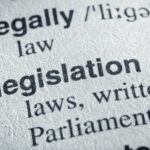The appropriate management of any workplace safety incidents is essential both to keep your staff safe immediately post-incident and into the future, and also to minimise reputational risks to the organisation and its employees.
Whilst it goes without saying that incident prevention is the better path to a safe workforce, it is also critical for managers and supervisors to understand their roles in responding to an incident.
There are also legal considerations for more serious incidents, relating to the responsibility of the PCBU to preserve the site of the incident (so far as is reasonably practicable) in order to allow for formal inspection by the regulator.
The inherently stressful nature of responding to a safety incident can make clarity of thought difficult for those concerned, therefore it is recommended that these important first steps be clearly documented in an incident response plan or procedure and well communicated to all managers and supervisors:
- Ensure that everyone at or near the incident site is safe and there is no ongoing risk to either those immediately involved in the incident, first responders or others at the site.
- So far as is reasonably practicable in the context of the first step, secure the site of the incident in order to preserve information for the inspection of the regulator (if a notifiable incident) or internal WHS personnel. If possible, take photos before anything is disturbed, especially if implementing the above Step 1 will necessarily result in some interference with the site.
- Communicate with management in line with reporting protocols.
- If the incident is notifiable as defined by Legislation, immediately notify the regulator by the fastest means possible.
- Consider whether legal advice or the establishment of legal privilege is required.
- If any workers have been seriously injured, notify next of kin if appropriate.
- Decide upon appropriate communications to the remainder of the workforce and implement these as soon as practicable.
- Appoint an appropriately trained person to initiate the investigation process (consider the use of an independent investigator for serious incidents).
- Appoint an authorised and properly trained person to liaise with the regulator, and any other external parties such as police, media, unions etc..
- Consider whether counselling for workers will be required and make arrangements.
- Ensure that document and record management processes are being followed to keep accurate records of the management of the incident.
- Determine and enact insurer notification requirements.
Please contact QRMC for more information.









